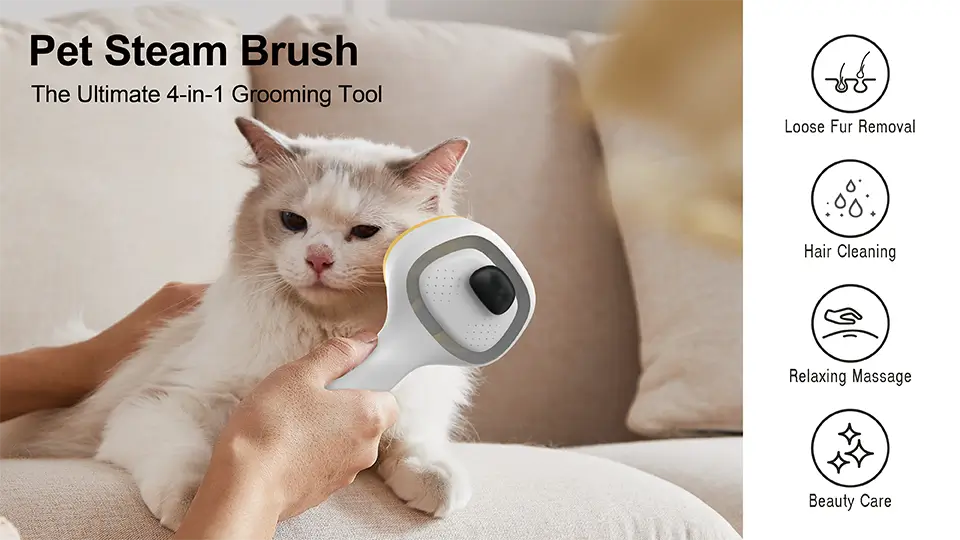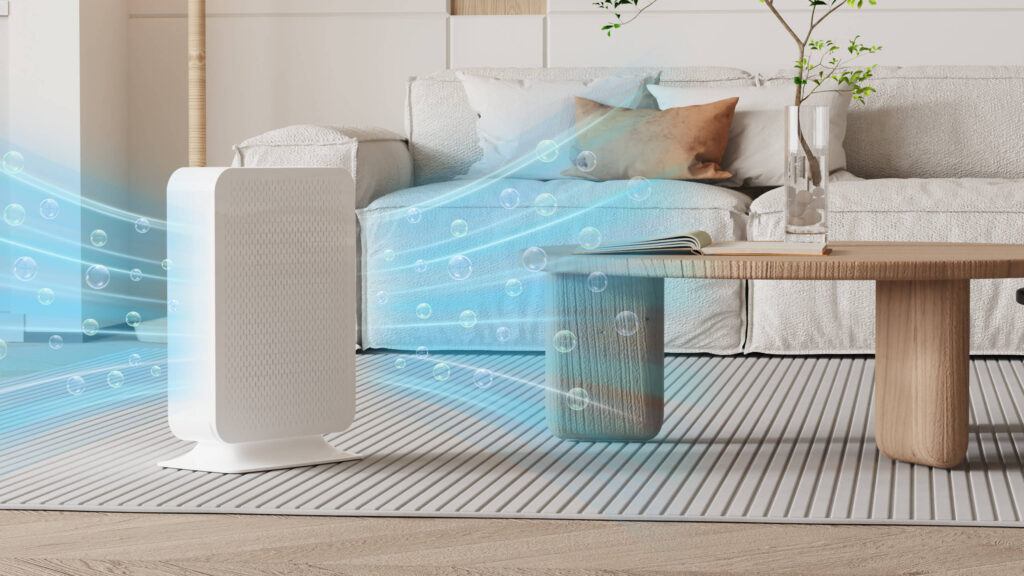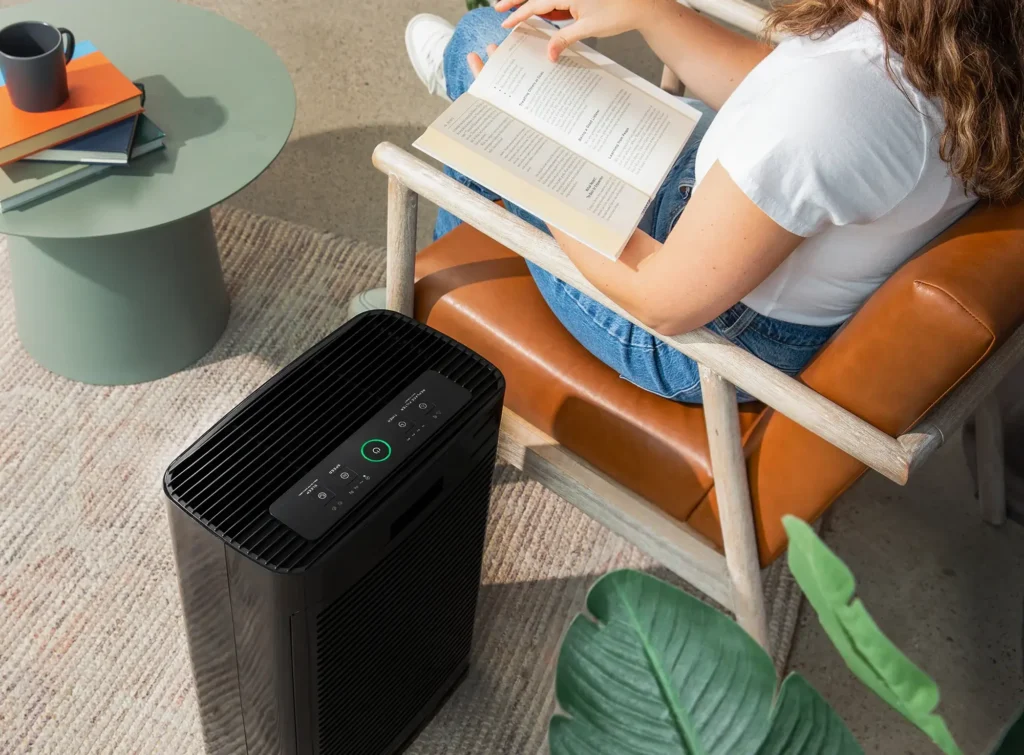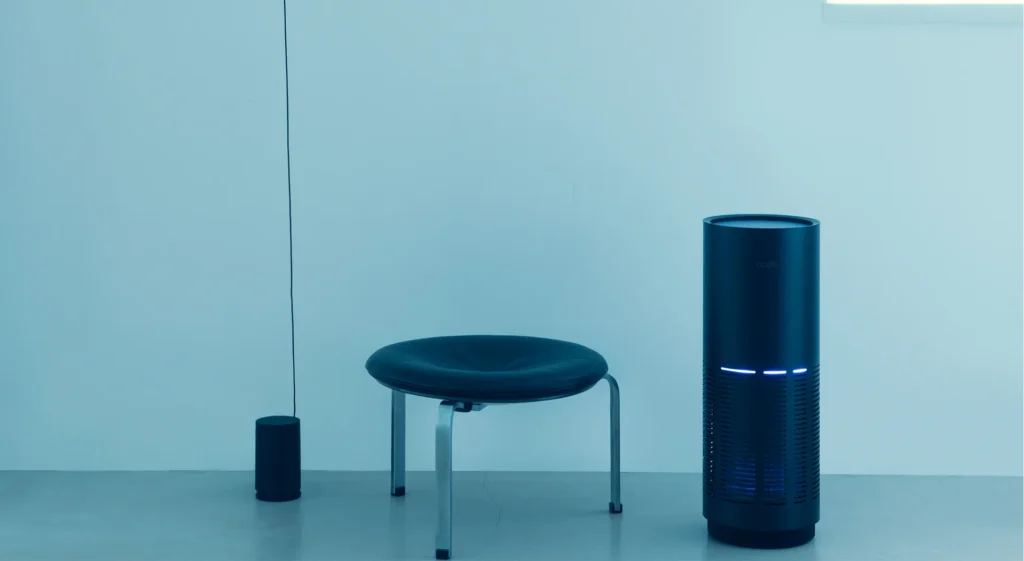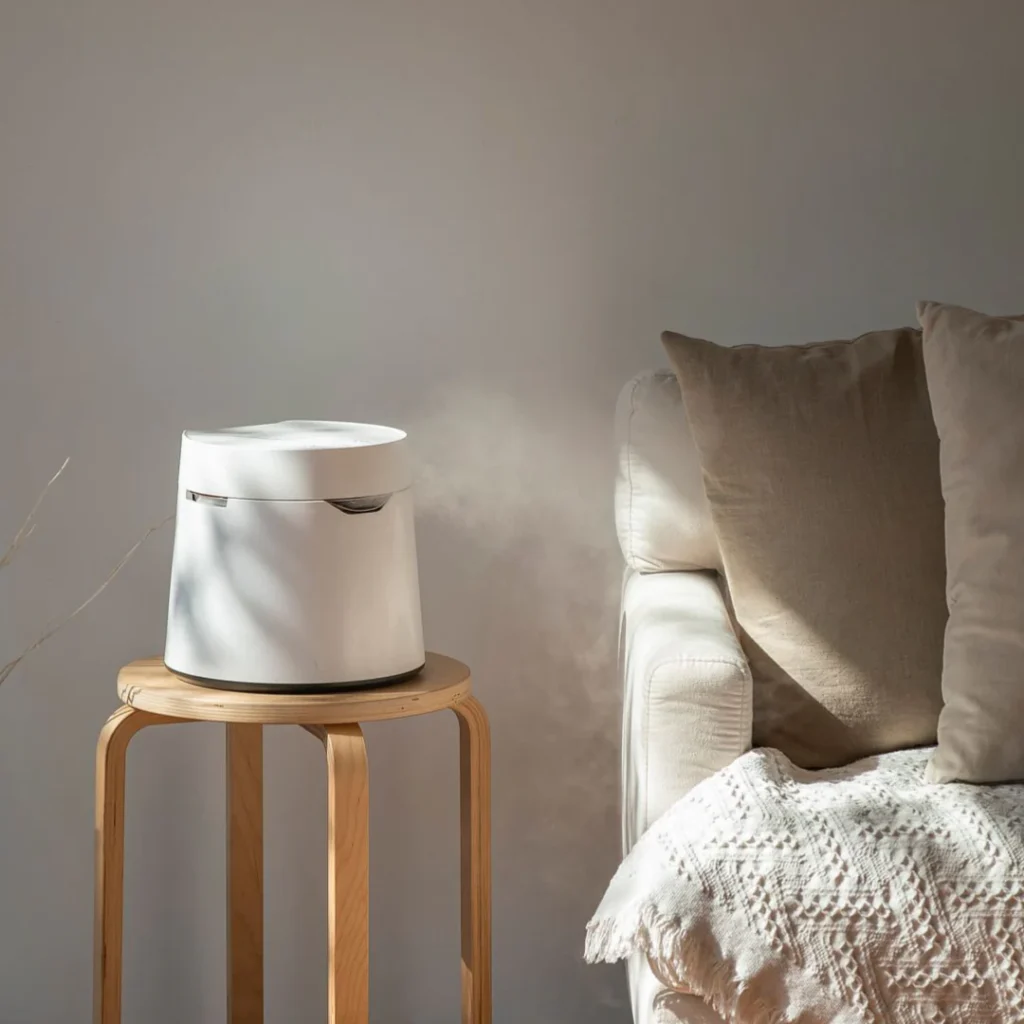O pó é aparentemente inofensivo. Mas assim que conhecer os seus efeitos, vai desejar que ela desapareça da sua casa. Felizmente, há muitas maneiras de o fazer.
Um dos poluentes atmosféricos mais prevalecentes em casas e edifícios é o pó. Uma vez que é abundante e microscópico, o controlo da sua presença é bastante difícil. Mesmo que não esteja a residir em zonas rurais, o pó está lá. De facto, as selvas urbanas estão repletas de problemas de poeira.
O facto é que é impossível eliminar completamente o pó do ar. É necessário um esforço rigoroso para garantir que o pó não se instala no seu espaço interior. Por exemplo, pode manter um regime de limpeza regular. Mas a sua melhor esperança é minimizar a presença de pó.
Há formas de regular a proliferação de pó nos seus espaços, como a utilização de purificadores de ar de alta qualidade. Neste artigo, vamos explicar-lhe estas técnicas.
De onde vem o pó?

Fonte da imagem: Vecteezy
O pó em sua casa provém de uma infinidade de fontes. E a poeira do seu vizinho pode ser diferente da sua casa. Por isso, pode realmente dizer-se que este contaminante é algo com que não se pode lidar convenientemente.
Especificamente, o pó é uma composição de várias matérias, tais como células da pele, pequenos tecidos e sujidade. A terra agarrada aos seus sapatos pode espalhar-se e tornar-se pó em sua casa. Por isso, é preciso ter cuidado com isso. Mas, ao mesmo tempo, já existem fontes de pó em sua casa, como os móveis estofados, os tapetes e os livros que guarda nas prateleiras.
Até os seus animais de estimação podem ser uma fonte de pó. Ao mesmo tempo, o fumo e o ar que vêm do exterior também podem trazer pó para dentro de casa. Além disso, deve ter em conta que os ácaros presentes em sua casa também podem acelerar a dispersão do pó dentro de casa. Em geral, o pó é como uma miscelânea de coisas diferentes (maioritariamente desagradáveis).
É normal haver poeira no ar?
Como já foi referido, o pó é um contaminante predominante no ar. Afinal de contas, provém de múltiplas fontes. Por isso, quer queira quer não, terá de lidar incessantemente com este problema.
At this point, one could say that dust is already a "normal" occurrence. It will always be likely that your home has dust, especially if you don't do regular cleaning. The build-up will always be there.
O que não é normal é deixar este pó proliferar dentro de casa sem implementar medidas que o possam controlar. É nesse momento que os efeitos do pó se fazem sentir. Um exemplo dessas medidas seria a utilização de purificadores de ar para salas.
O pó pode ser perigoso?

Fonte da imagem: Unsplash
A poeira tem um efeito adverso na nossa saúde. As partículas de poeira que flutuam no nosso ar são muito pequenas. Entram nos nossos olhos, nariz e boca, onde podem causar doenças e agravar doenças já existentes.
Muitas pessoas são sensíveis à exposição ao pó, uma vez que este contaminante é irritante para os pulmões. Se inalar poeiras em grandes quantidades, sentirá desconforto no seu sistema respiratório. As pessoas que sofrem de alergias são susceptíveis de sofrer mais ataques de alergia, especialmente se o pó contiver pólen, esporos de bolor e pelo.
Em casos graves, a exposição ao pó pode induzir ataques de asma, dermatitee infeção dos brônquios. Se o pó contiver produtos químicos, é provável que venha a sofrer de outras complicações de saúde.
Áreas comuns da sua casa onde há poeira
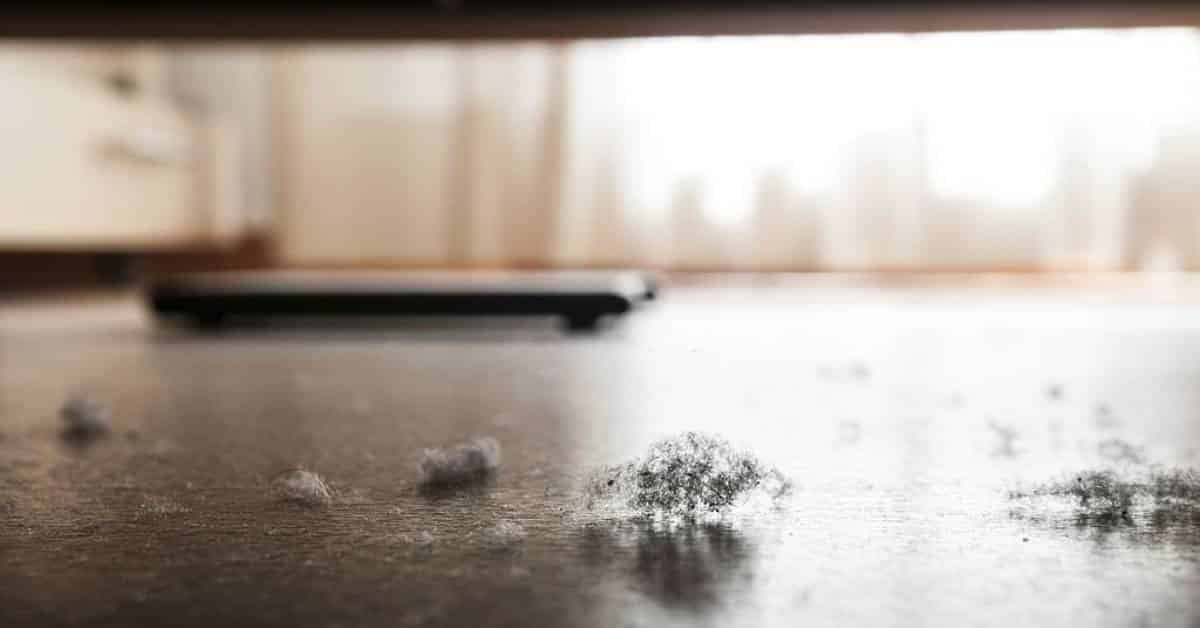
Fonte da imagem: iStockphoto
De um modo geral, a sua casa é suscetível de acumulação de pó. Não há razão para pensar que uma parte está a salvo deste contaminante. Mas, na maior parte das vezes, o pó é comum nestas áreas:
Salas de estar
As salas de estar estão sempre cheias de problemas com o pó. A razão para este facto deve-se ao elevado tráfego humano nestas áreas. As pessoas entram e saem destas zonas. Por isso, é evidente que os vestígios de sujidade que trouxeram serão deixados aqui. A proximidade de janelas e portas também torna as salas de estar propensas à acumulação de pó.
Quartos de dormir
Surpreendentemente, os seus quartos também são propensos à proliferação de pó. Como já foi referido, os ácaros podem produzir pó através da sujidade que produzem. Ao mesmo tempo, os quartos de dormir são também zonas onde o tráfego humano é elevado. Por isso, de uma forma ou de outra, é possível que também esteja a trazer pó para este espaço.
Cozinhas
As cozinhas são uma das partes mais movimentadas das nossas casas. É aqui que as pessoas comem, cozinham e lavam a loiça. Há sempre uma tendência para o pó proliferar aqui. A combinação da atividade humana e das fontes naturais de pó faz com que as cozinhas sejam um dos locais mais poeirentos das casas.
Caves
Se a sua casa tem caves, é provável que também aí se acumule pó. A maior parte das vezes, as caves são frequentemente ignoradas. Os proprietários não estão muito interessados em limpá-las. Ao mesmo tempo, a ventilação nas caves não é muito boa. Por isso, tudo o que lá entra não desaparece. As paredes e o chão de betão acabam por produzir resíduos que se transformam em pó.
Porque é que a purificação de poeiras é importante?
O pó, embora invisível (na maior parte das vezes), é um irritante respiratório. É capaz de provocar diferentes tipos de doenças, incluindo tosse e pieira. O pó também é mau para pessoas que sofrem de alergiaspois pode facilmente desencadear crises e ataques de asma.
Estas complicações relacionadas com o pó são algumas das razões pelas quais a remoção do pó deve tornar-se uma prioridade em todas as casas. Se não for possível eliminá-las totalmente, pelo menos reduza o seu número para um nível mais tolerável. Uma gestão eficiente do pó ajudá-lo-á a evitar os problemas respiratórios que o pó pode causar.
Também se pode dizer que o pó pode sujar as nossas casas. Não queremos residir num local cheio de pó, certo? Por isso, é essencial remover o pó através da utilização de métodos de limpeza eficazes.
Adicionar um purificador de ar para eliminar o pó no ar

Fonte da imagem: iStockphoto
Um dos meios mais eficazes para remover o pó em sua casa é através da utilização de purificadores de ar. Estes aparelhos são concebidos para ajudar a melhorar a qualidade do ar interior. A utilização de purificadores de ar de alta qualidade permite reduzir a presença de contaminantes no ar.
Saiba mais sobre estes purificadores de ar e veja como podem ajudar a livrar-se dos problemas de pó nos seus espaços.
Porque é que um purificador de ar é importante para melhorar a qualidade do ar?
Como mencionado, os purificadores de ar podem ajudar a melhorar a qualidade do ar interior. De facto, a principal função desta máquina é eliminar os vários poluentes que tornam o ar sujo, malcheiroso ou insuportável de respirar.
O desempenho destes purificadores de ar é melhor do que o dos aspiradores e de outros métodos de limpeza. Afinal de contas, estes aparelhos visam diretamente o ar, que é o próprio meio por onde o pó, os alergénios e os agentes patogénicos são transportados através da sua casa. Desde que haja um purificador de ar em sua casa, o ar que inala estará a salvo destes contaminantes, independentemente da sua origem.
Purificadores de ar para poeiras
Se tem um problema de poeira em sua casa, então investir num purificador de ar é uma obrigação. Para além da aspiração, são os purificadores de ar que tratam o contaminante de forma muito mais abrangente.
Tenha em atenção que o pó tende a flutuar no ar em vez de se fixar nas superfícies. Os purificadores de ar aspiram o ar para o seu sistema. Uma vez lá, os filtros fazem o seu trabalho, removendo o maior número de tipos de contaminantes presentes no ar. De facto, a maior parte dos purificadores de ar são concebidos para captar o pó. Assim, quando tiver estes aparelhos em sua casa, o pó não se tornará um problema.
No entanto, nem todos os purificadores de ar têm o mesmo desempenho. Em breve, falaremos sobre como escolher um purificador de ar para a remoção de poeiras.
Os purificadores de ar para poluentes são seguros?
Os purificadores de ar são geralmente seguros de utilizar. Estes dispositivos utilizam o sistema de filtragem testado e comprovado para capturar diferentes contaminantes no ar. Essencialmente, funcionam sem gerar qualquer resíduo no ar.
Ao mesmo tempo, os purificadores de ar de alta qualidade têm funcionalidades adicionais, tais como filtros electrocirculadospara melhorar o seu desempenho. Mais uma vez, isto não induz qualquer conteúdo nocivo no ar que respira.
O único purificador de ar a que deve estar atento são os geradores de ozono. Estes geram ozono, que é um composto gasoso que se diz neutralizar os contaminantes transportados pelo ar. Embora o conceito seja ideal, o ozono continua a ser um irritante para os pulmões. A sua inalação em grandes quantidades pode causar problemas respiratórios. De facto, a Agência de Proteção Ambiental emitiu um aviso contra a utilização de geradores de ozono.
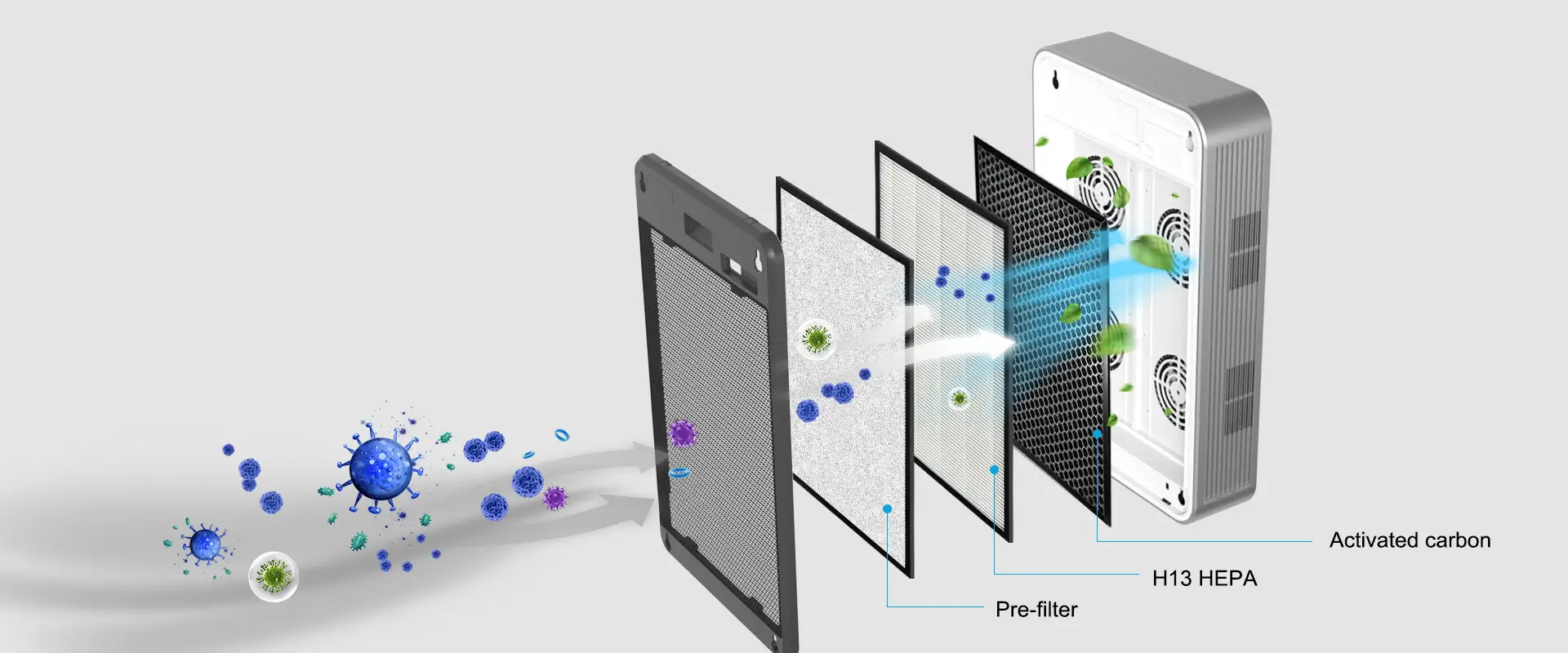
Como é que os purificadores de ar funcionam para remover o pó?
Os purificadores de ar normais utilizam sistemas de filtragem para remover diferentes contaminantes que flutuam no ar. Tecnicamente falando, existem pelo menos três filtros incluídos nestes purificadores de ar: Filtro HEPA, pré-filtro e filtro de carvão.
É o pré-filtro que capta os detritos grandes, como os pêlos dos animais. Em alguns casos, também podem captar sujidade e poeira se forem suficientemente grandes para serem filtrados. O que trata da poeira microscópica é o filtro HEPA, que é um meio especializado capaz de reter 99,9% das partículas que são tão pequenas quanto 0,3 mícron.
Neste sentido, os filtros HEPA podem remover agentes patogénicos e alergénios. Ao mesmo tempo, também podem lidar com o pó invisível que circula nas divisões. Entretanto, os filtros de carbono são os que eliminam substâncias odoríferas, químicos e compostos orgânicos voláteis.
Remoção de poeira com purificadores de ar: Passo a passo
Segue-se uma descrição geral do funcionamento dos purificadores de ar baseados em filtros. O processo é simples, mas é suficientemente eficaz para garantir a limpeza do ar que respira.
- O purificador de ar utiliza a sua ventoinha para puxar o ar para o seu interior.
- Quando o ar passa pela sua entrada, passa por várias camadas de filtro.
- É o pré-filtro e o filtro HEPA que remove de forma abrangente o pó e a sujidade do ar.
- Depois de o ar passar pelos filtros, é libertado de novo para a divisão.
Este processo é repetido para garantir que o ar interior nos seus quartos e espaços habitacionais permanece limpo e livre de partículas nocivas.
Quanto tempo demora a assentar o pó após a remoção?
Não há uma resposta concreta para esta questão. Já mencionámos que as fontes de pó são quase infinitas. Mesmo que haja um purificador de ar, enquanto houver uma oportunidade para o pó entrar em casa, ele não desaparecerá.
Por isso, é essencial que também garanta que a sua casa seja o mais possível à prova de pó. Embora isso pareça impossível, há formas de o fazer.
A única garantia aqui é que, enquanto houver um purificador de ar em sua casa, a presença de poeira será minimizada. Poderá mesmo reduzir a necessidade de efetuar limpezas de vez em quando. Só isso já é um benefício que só os purificadores de ar podem proporcionar.
Mas, por outro lado, nem todos os purificadores de ar funcionam da mesma forma. Assim, na próxima secção, discutiremos brevemente como deve escolher um purificador de ar para a remoção de poeiras.
Coisas a considerar ao comprar um purificador de ar para poeiras
Seguem-se algumas das considerações essenciais na escolha de um purificador de ar para remoção de poeiras. Basta seguir estas diretrizes e obterá certamente um purificador de ar que satisfaz as suas necessidades.
- Cobertura - Os purificadores de ar variam no que diz respeito à cobertura. Alguns purificadores de ar são concebidos para divisões grandes, enquanto outros estão limitados a áreas pequenas. Certifique-se de que o purificador de ar que adquirir está classificado para funcionar com a metragem quadrada da sua divisão. Por exemplo, se o seu quarto tem cerca de 400 pés quadrados, então o purificador de ar deve ser classificado para trabalhar pelo menos 400 pés quadrados de espaço. Quanto maior for a sua cobertura, melhor.
- Tipos de filtros - Neste caso, é necessário um purificador de ar que tenha um pré-filtro e um filtro HEPA. Estes são os filtros que capturam o pó e os detritos. Independentemente do tamanho do pó, estes filtros são capazes de o capturar. Um purificador de ar que não tenha estes filtros não lhe dará o desempenho de remoção de pó de que necessita para o seu espaço.
- Taxa de fornecimento de ar limpo - A taxa de fornecimento de ar limpo (CADR) de um purificador de ar especifica a capacidade de um purificador de ar para lidar com contaminantes específicos: pó, pólen e fumo. Quanto mais elevada for a classificação CADR de um purificador de ar, mais abrangente será o seu desempenho contra os contaminantes domésticos comuns, como o pó. A propósito, os purificadores de ar maiores têm números CADR mais elevados do que os seus homólogos.
Como minimizar a poeira após a remoção?
Como já foi referido, é impossível eliminar totalmente o pó da sua casa, mesmo que tenha um purificador de ar. A melhor opção que tem é garantir que a presença de pó é mínima. Eis algumas formas de o fazer.
-
- Tirar os sapatos - A poeira é inevitável, mas pode remover a maior parte dela tirando os sapatos quando chega a casa. Os especialistas recomendam que descalce os sapatos, especialmente se vier de um local rico em solo e sujidade.
- Colocar um tapete - Um tapete é uma comodidade essencial que pode impedir a entrada de pó em sua casa. Os tapetes robustos devem ser colocados na porta de entrada para que as pessoas possam limpar os pés e os sapatos antes de entrarem. Não se esqueça de os sacudir de vez em quando para remover o pó que se acumula neles.
- Mudar regularmente os filtros do ar condicionado - Deve mudar os filtros do seu aparelho de ar condicionado pelo menos de três em três meses. Mas pode tornar a limpeza mais frequente se achar que há demasiado pó em sua casa.
- Limpar regularmente a roupa de cama - Nunca pense que o colchão está a salvo da acumulação de pó. Com o passar do tempo, o colchão acumula diferentes tipos de sujidade, desde ácaros, pêlos, flocos de pele morta e outras coisas pequenas. Por isso, não se esqueça de o limpar regularmente, incluindo as almofadas e os cobertores.
- Aspirar regularmente - Não se esqueça que deve aspirar as suas divisões regularmente. As zonas de muito movimento, como a cozinha e os corredores, devem ser aspiradas de dois em dois dias. As outras zonas devem ser aspiradas uma vez por semana.
Outras formas de remover o pó do ar
O pó pode ser um perigo grave nas casas, causando alergias, comichão nos olhos e possíveis danos nos pulmões. Uma vez que o pó pode deslocar-se muito rapidamente, é melhor manter a sua casa o mais livre de pó possível. Eis algumas dicas para o ajudar a tornar a sua casa num local seguro:
O cuidado dos animais de estimação é obrigatório
Ficará surpreendido com o facto de os seus animais de estimação serem uma fonte de pó! As suas peles e células mortas geram frequentemente pó. E se não tratar deste assunto corretamente, os seus animais de estimação espalharão mais pó do que espera.
Uma forma de manter as coisas controladas é manter os seus animais de estimação limpos e aparados. Limpe regularmente os seus animais de estimação para que o pelo e as células mortas da pele não se acumulem. É claro que cuidar dos seus animais de estimação fá-los-á sentir-se melhor.
A limpeza adequada é uma obrigação para as famílias cujos animais de estimação estão sempre no exterior. Os seus pés e patas estão certamente cheios de terra que podem trazer para dentro de casa!
Lidar com a eletricidade estática
Curiosamente, a eletricidade estática acontece dentro de sua casa sem que o saiba. Está frequentemente presente em zonas secas. O problema desta eletricidade estática é que atrai o pó e a sujidade. E não é só isso, também faz com que o pó se agarre firmemente às superfícies.
Verificará que a acumulação de pó em salas secas é demasiado rígida. Isto deve-se à eletricidade estática. Felizmente, é possível resolver este problema através da instalação de humidificadores.
A função destes humidificadores é adicionar humidade ao ar interior, tornando-o mais húmido. Quando tiver um humidificador, procure ter um nível de humidade entre 40 e 50 por cento. Desta forma, irá curar a secura do ar interior, o que, por sua vez, reduz a proliferação da eletricidade estática.
Limpar o pó dos estofos
As janelas e as portas são a entrada comum do pó. Por isso, deve prestar-lhes mais atenção.
A aspiração não deve incidir apenas no chão. Deve também fazê-lo nos cortinados, no sofá e em todos os acessórios com fibras macias. O pó junta-se e acumula-se neles. De vez em quando, deve aspirá-los para garantir que não sofrem de acumulação de pó.
Desde que consiga limpar os seus têxteis, já está a realizar um procedimento importante de desempoeiramento. E, claro, não se esqueça de seguir este regime regularmente.
Mantenha a sua casa arrumada
O pó prolifera frequentemente em áreas onde há muita desarrumação. Quanto mais objectos tiver no seu espaço, mais áreas o pó pode assentar e acumular-se. Ao mesmo tempo, nunca saberá se esses objectos, como os têxteis, são eles próprios causadores de pó.
Se quiser ter uma remoção de pó eficiente, reduza primeiro a desarrumação nos seus espaços de vida. Não encha a sua casa com muitas coisas; caso contrário, ser-lhe-á difícil manter o pó afastado. Por exemplo, se consegue viver sem tapetes, mande-os retirar do seu espaço.
Conclusão
Como se pode ver, o pó é um contaminante difícil de controlar e gerir. Requer a ajuda de purificadores de ar, bem como de outros métodos de limpeza, para evitar que destruam a limpeza da sua casa e a segurança da sua saúde.
Por falar em purificadores de ar, já mencionámos que nem todos os purificadores de ar que vê têm a mesma eficácia. É necessário adquirir o seu purificador de ar a fabricantes de renome, como a HisoAir. Esta última é uma marca internacional de purificadores de ar de qualidade médica. Todos os seus produtos cumprem as normas internacionais de purificação do ar. Visite HisoAir e ver todas as suas ofertas.

